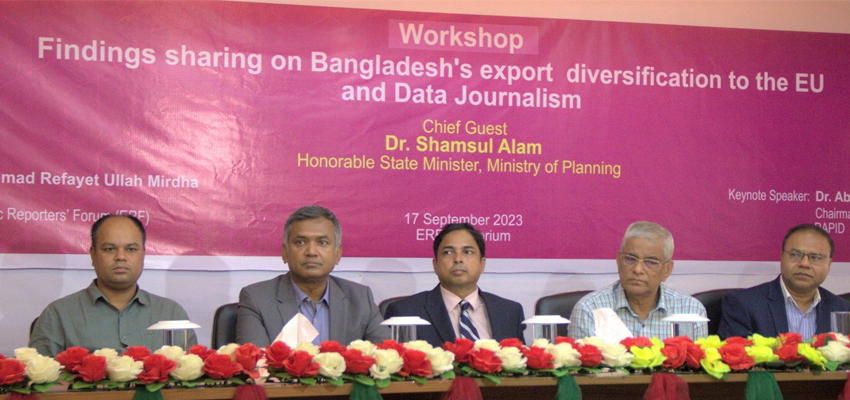Bangladesh is losing more than 40% of its export potential in European markets due to a lack of diversified products and standard certification, according to a study.
Furthermore, due to protective tariff masseurs in Bangladesh, the local businesses find the domestic market more lucrative than export, which is also another challenge to the export market, according to the study conducted by the Research and Policy Integration for Development (RAPID).
The study estimated that Bangladesh had a total $40 billion export potential in the EU in 2021, of which $23 billion was utilised.
Besides, of the remaining $17 billion unutilised, $2.5 billion was in non-apparel items, it said.
The report mentioned that non-apparel products have high export potential in the EU market, however, the market can also help diversify garment sector exports, including more man-made fibre items.
RAPID Chairman Abdur Razzaque presented the report, titled “Exploring Export Diversification Opportunities in the European Union”, at a workshop at the Economic Reporters Forum (ERF) auditorium on Sunday.
Some other sectors are also doing well in the local market, he said, adding, “Our manufacturing sector growth was double-digit in the last five years and we have the capacity to meet local demand.”
The local industries’ product standards are very different from export markets, in some cases, they are not getting standard certification to export and the local market is more lucrative than export markets, said Razzaque.
He also advised that Bangladesh should move to electrical and electronic goods, as Vietnam is exporting over $55 billion of such items.
Referring to local electrical and electric enterprises, he said local industries are ready but enhancing the capacity of existing standards of authorities and institutions to provide globally recognised certification and necessary testing facilities to exporters remains a challenge.
The study also recommended attracting FDI, trade policy reform, and integrating into EU supply chains will be critical ingredients for non-RMG-led export diversification.
Addressing as the chief guest, State Minister for the Ministry of Planning Professor Dr Shamsul Alam acknowledged that the average import duty is higher in Bangladesh than in competitor countries. “If it is not rationalised, we will not be competitive in the export market.”
“The government is providing protection to local industries through high duty in the import stage, but now it is being rationalised as per recommendations from our experts and economists,” said the state minister.
ERF and RAPID jointly organised the workshop on findings sharing on Bangladesh’s export diversification to the EU and data journalism. ERF president Refayet Ullah Mirdha presided over the event.
Bangladesh losing more than 40% export potential in EU: Study

